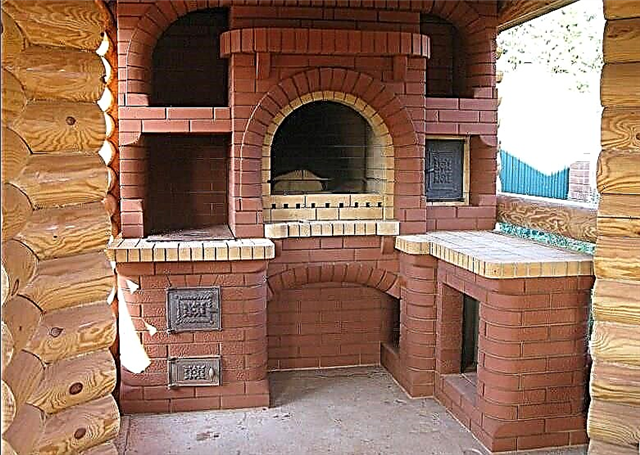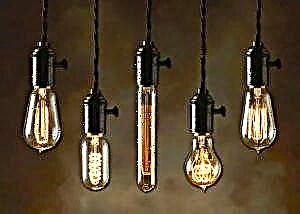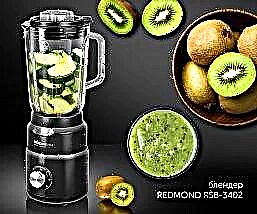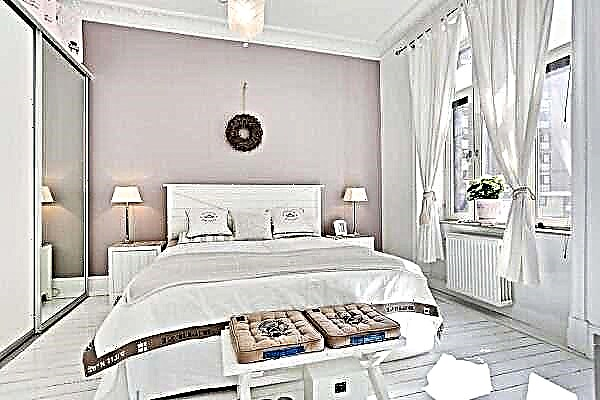Often, a cottage is not just a rectangular box, but a more complex complex, including bay windows, balconies, terraces, and possibly extensions. The mutual arrangement of all these parts and sets the basis for the appearance of the structure. How harmoniously they relate to each other largely determines the quality of the facades.
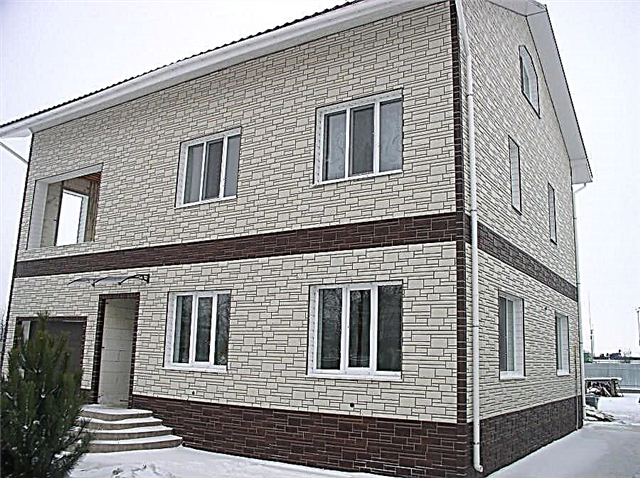
Another important aspect of the architectural design of the building is the position, size and shape of the window and door openings. A cottage with large stained-glass windows, occupying a significant part of the plane of the walls, will seem lighter than a house with narrow little loopholes.
If you are looking for real wooden window sills to order, then we will be happy to help you. On the official website of our company presents the largest selection of window sills at affordable prices.
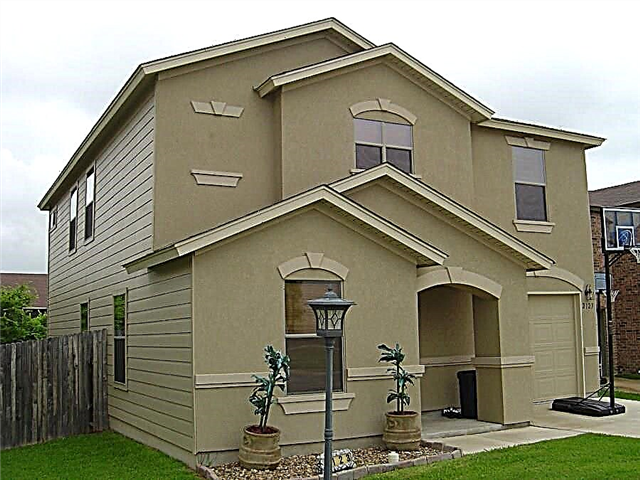
It is also important not to forget that the facade of a two-story house will have different proportions than, for example, a one-story house. This is also a significant circumstance that influences what the cottage will become as a result.

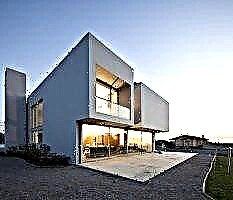
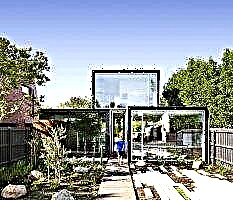




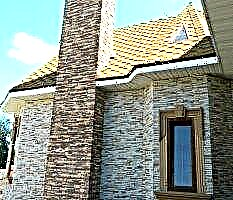


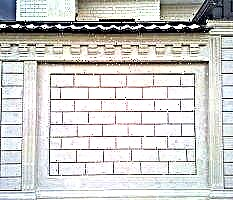

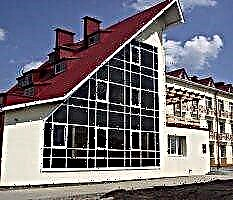





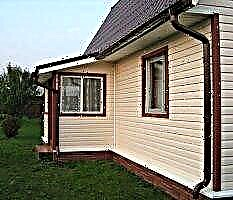





Facing materials
In the past, the appearance of a building primarily depended on the material used for its construction. If the walls were made of brick, then their surface in most cases was the same brick.

However, modern technology allows you to create thinner, cheaper, but at the same time strong and warm walls - due to the use of multilayer structures of different elements. This means that the facade of a brick house can demonstrate, for example, a very spectacular and realistic wood finish.
If you are interested in reliable air conditioners with delivery in Sevastopol, we recommend that you visit the Klondike online store.
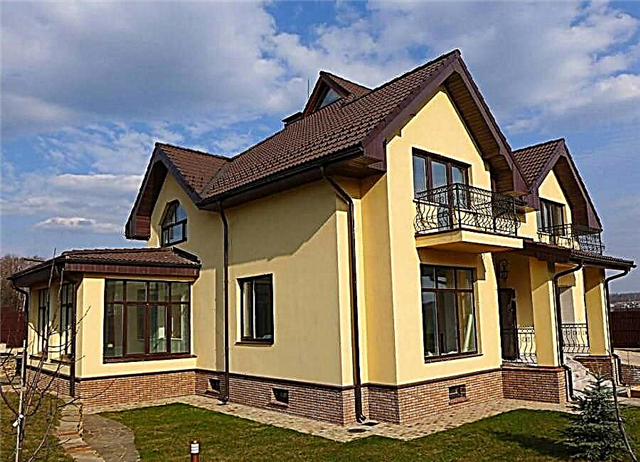
And vice versa - a cottage, which at first glance looks brick, can actually be built, for example, from reinforced concrete.

In general, whatever your home would be constructed of, you can always adjust its appearance with the help of correctly selected facing materials. Now in the public domain there are so many options. From traditional plaster to porcelain stoneware, siding, decorative stone.

They are used individually - or in combination with each other. Some of the possible methods of facing should be discussed in more detail.

Features
The facade of a country house or cottage is a kind of architectural "robe" of the building, protecting it from the influence of external factors and creating an attractive appearance. The exterior of the housing serves as an indicator of the status and luxury, taste and preferences of the homeowner, his financial capabilities. The main tasks of the facade, which should be solved equally well, are creating an attractive appearance and maintaining a stable indoor microclimate.

The style of the facade of a private house consists of a whole chain of components, including:
- The color that sets the psychological mood when looking at the facade of the house.
- Type and texture of materials used for wall decoration.
- Decorative elements.
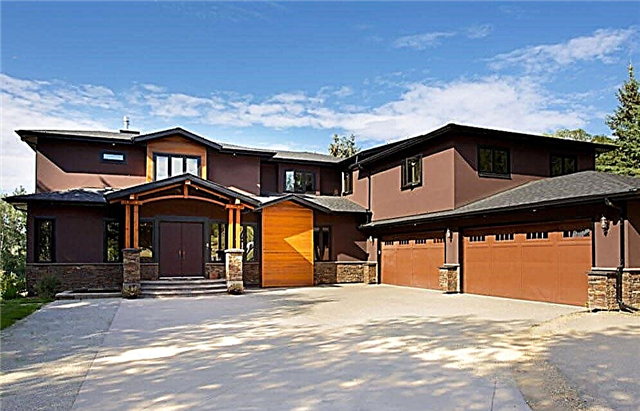
The whole complexity of designing the exterior design of the cottage is that all of the above components should be in harmony not only with each other, but also with the surrounding landscape design, neighboring areas. Every era and culture offers us directions that are time-tested. For example, a chalet attracts with its cosiness, classicism with its versatility, Provence with bright colors and a romantic atmosphere, half-timbered with beamed lace.

However, when choosing a style, you need to focus not only on its beauty, but also practicality, given the regional climate. For example, the Mediterranean style suggests the presence of balconies, which is not appropriate in the northern regions of the country, and an elegant Empire style in the middle of the forest will simply be lost, becoming an inexpressive spot.

When designing a cottage outside, it is important to understand that all the elements and objects around the building (benches, arbors, plants and lighting) should work on the "image" of a country house. For example, the rectangular contours of the accompanying buildings complement modern styles, but completely contradict the chalet. No less important is the material used to equip garden paths, for example, arbors and flower beds, alpine hills and artificial ponds, sculptures and bushes are poorly combined with minimalism.

Cottage facade design options
At the moment, designers identify more than ten main areas used to design the facade. We will consider the best solutions, given the number of storeys of the building. For example, for a one-story building, an ageless classic is best suited, characterized by strict proportions and lines, a combination of minimalism and the wealth of individual objects (arches, columns or stairs). This style emphasizes the maturity of the homeowner's mind, demonstrating its status and taste.

As for the two-story cottage, it can be done in the country style, where the features of the building will be completely different. In a broad sense, French style includes both Provence and chalets from the Alps. This style is best used if the house is located in the background of a forest or mountains.

Country Style Varieties:
- Provence is a remote place, devoid of wildness, where light and cold shades are superior. As a decor, pediments and balconies, white windows, divided into small sections, are used.

- The chalet is a more wild and moving style, combining natural materials such as wood and stone.

Decorative solutions
When creating the design of the cottage from the outside, you can use various decorative elements and global solutions, including:
- The facade is finished with rust (unprocessed stone or its imitation), complemented by arches and columns.
- Window-sills and slopes decorated with stucco molding or molding.
- Attractive windows painted in the desired color, complemented by a triangular or onion sandric (cornice).

- Arches and columns.
- The cornice is not only the protection of the walls from precipitation, but also an element that emphasizes the decoration of the facade, which can serve as an ornament. You can make it more attractive by mounting LED backlight there.

- Corner elements, for example, geometric patterns or imitation of torn stone.
- Niches for vases and statues.
- Materials imitating natural ones, for example, wild stone or timber.

Materials for decorating the cottage outside
At the moment, almost all traditional mineral and modern synthetic materials are used to clad the facade of a country house. Consider only the most popular options, namely:
- Decorative facade plaster is an aesthetically attractive finishing material with soundproof and heat-saving properties. In addition, plaster protects the exterior walls of the house from mechanical damage and atmospheric precipitation, and is also resistant to ultraviolet sunlight. Depending on the bonding element, it can be: silicate, acrylic, mineral, silicone.

- Siding are panels that overlap. Varieties: wood, wooden, vinyl. In order to wash the facade of the cottage, it is enough to pour it with water, in addition, the material is environmentally friendly and fireproof.

- Tiles and bricks - something will be unnecessary to talk about these building materials, because everyone knows their properties and advantages. Brick is the oldest building material, which in the subconscious of people is associated with quality and environmental friendliness, fire safety and prosperity, beauty and luxury.
No. 1. Classic style
Despite the emergence of many interesting modern architectural styles, the classic remains popular, because it creates the impression thoroughness and emphasizes the refined taste of the owner of the house. The style is suitable for large houses, and its main features are:
- symmetry and clarity of forms, regular layout, proportionality and harmony,
- decorative elements are present, but they are not very elaborate. Particular attention is paid to balustrades and columns,
- mainly natural materials are used: plaster and marble for walls, natural tiles for roofing, forged metal for fencing and gratings.
No. 2. Baroque
Baroque style is pretentiousness, splendor, an abundance of decor. The direction is not so often used in modern construction - usually only its individual traits:
- combination of straight and curved shapes,
- the abundance of columns, pilasters, sculptures, gilding and other decorative elements to emphasize the status of the owner of the house,
- mainly pastel shades are used, as well as burgundy, green, red.
Scandinavian style
The style is distinguished by functionality, plenty of natural light and stylish practicality while maintaining comfort. Scandinavian architecture helps to stay closer to nature even in urban environments. The style is dominated by simplicity and conciseness.

The architectural direction arose in countries with a harsh climate similar to the Russian one - Denmark, Sweden, Norway. The facade is made of wood. Sheathing is treated with protective compounds to preserve the natural structure of the material. A characteristic feature of the buildings: a large porch, terrace, gable with a steep slope of the roof with an asymmetric or classical shape, large windows or panoramic windows.

Wooden window frames or double-glazed windows, the decoration of which imitates wood, are desirable. The roof is covered with polymeric materials or metal tiles. The buildings are distinguished by soft natural shades: terracotta, dark green, gray, brown.

Materials for decorating the facade of a private house
On the construction market today you can find a huge offer of materials used for facade decoration: from decorative plaster and siding to stone and porcelain tiles. Their choice depends on the preferences of the owner of the building, the availability of free time necessary for the performance of work and financial opportunities. All materials presented can be used individually or combined with each other.
Facade design of a private house
The exterior of the house tells a lot about its owner. Therefore, when performing the decoration of the facade, you must adhere to a certain style. The most popular home decoration styles today are:
- Modern. It is characterized by tall windows with a thin frame. The finish is usually restrained in light colors.
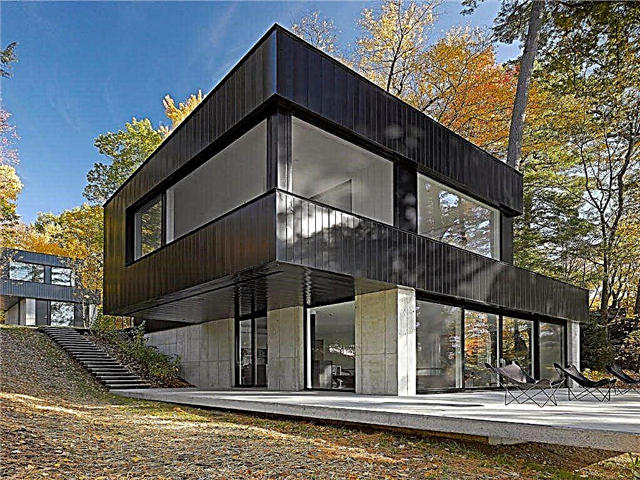
- American. This option is ideal for single-story houses. A distinctive feature of the style was the complex design of the roof.

- Classical. Here all the rules of symmetry will be strictly observed, even despite the use of various forms of the building. Classic-style homes are often complemented by attic floors and a rounded veranda.
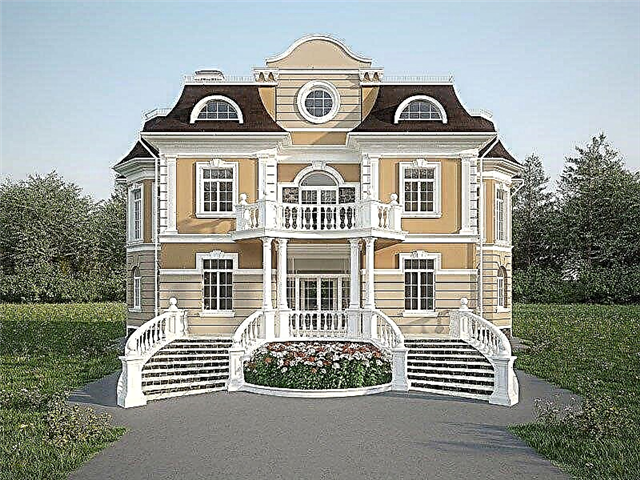
- Chalet. The peculiarity of the style was a sloping roof, the presence of balconies or verandas, wall decoration with wood.

- Fachwerk. This is a direction of German style, which involves decorating the house with wooden balconies and light painting of the walls.

- Rustic. To complete the decoration of houses in this style, only wood is used. The distinctive features of the rustic style are: shutters, carved skates and other decorative elements.
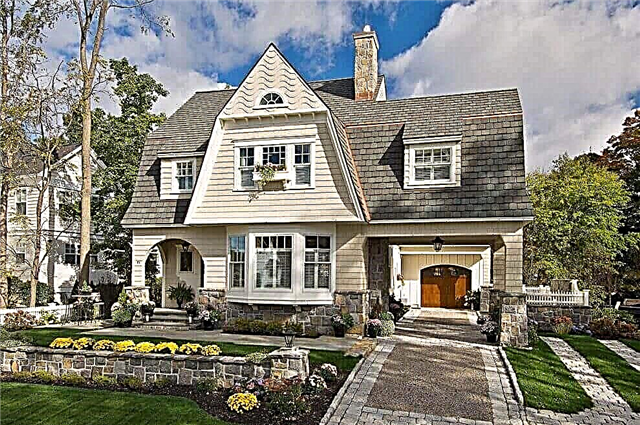
- Japanese. This style can be recognized by the elevated corners of the roof, simple layout, light colors of the walls and dark decoration of the corners of the building.

The choice of color for decorating the facades of a private house
When decorating the walls of a house, you need to pay attention not only to its style, but also to the color of the facade. This can affect the overall impression of the building and favorably emphasize its merits. Choosing a shade, it is recommended to adhere to some rules:
- Light colors should be chosen for the design of small objects. This technique will visually bring the house closer and make it bigger. But dark shades, on the contrary, will remove the object and make you pay attention to the surroundings.
- Bright colors need to be chosen for simple buildings with minimal decor.
- When designing facades, you can use up to 3 basic tones. In this case, one of them will be used as a decor.
On a note: smooth surface looks bright, even if painted in pale colors. A rough, on the contrary, discolors even bright colors.
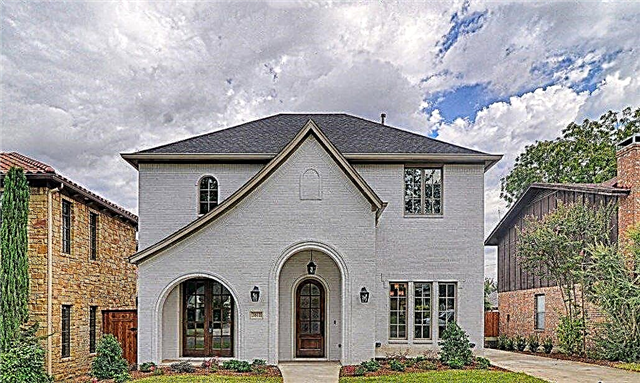
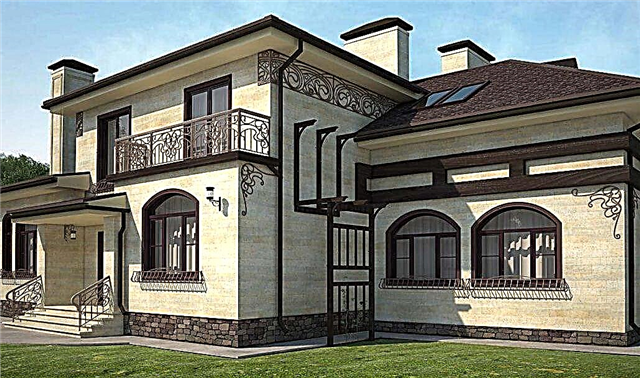

Facade decoration
For decorating the facades of private houses, various decorations are widely used. The simplest of them is a cornice, which can be placed under the roof or used to separate the floor and basement. It is allowed to place a bas-relief above the door or in the "empty" areas of the wall if the building is made in the classical style or baroque.
Columns that will be appropriate on a large porch with a visor are considered universal decor. Near the front door you can put figurines or flowerpots with flowers. Popular decorations include rusty stones, which are used to decorate corners or create a vertical separation of a building.
Number 3. Modern
Having appeared at the turn of the 19th and 20th centuries, Art Nouveau style still has many fans, because it allowed to completely rethink the look at architecture, abandon rigor in favor of ornate bizarre formsbut do not lose the sense of proportion.
Distinctive features:
- an abundance of smooth curving lines, which manifests itself in the form of windows, doors, roofs and other elements. Symmetry gives way to naturalness
- both traditional and new materials are used in decoration, a special place is occupied by ceramic glazed tiles, mosaics and stained-glass windows,
- the facade of the Art Nouveau house is often decorated with floral motifs,
- the internal layout is usually complicated, with numerous turns, descents and climbs; rooms are grouped around the hall, which is especially large.
The direction is used in the construction of private country houses, as well as small houses for several families. There are whole cottage villages in which all buildings are made in this style. However, it is not easy to design such a house correctly, because modern is the style of the past, it is difficult to feel it, having caught its character, therefore the architect has a greater risk of crossing the line and creating something that only remotely resembles modern.
Number 4. Minimalism
Minimalism is one of the most popular contemporary styles for private homes. As in the interior, minimalism involves the use of only necessary and functionally significant details, therefore, buildings are characteristic severity of forms and almost complete lack of decor. Among other features:
- conciseness, compliance with the rules of composition, simplicity, the use of only the most necessary, the versatility of each element, the rigor and geometricity of forms,
- preference is given to natural materials, including stone, wood and glass,
- no hints of pretentiousness and sophisticated decoration elements,
- single color scheme, mainly light shades,
- built-in lighting around the perimeter of the house and the presence of large windows, living room glazing on the floor.
Minimalism in architecture is reduced to a minimum of detail, a maximum of light and space.
No. 5. High tech
High-tech style in its pure form is rarely used in the construction of a private house - usually only some of its elements are taken, combining minimalistic minimalism. The direction arose under the influence of industrial architecture, which explains its main features:
- strict straight lines, restraint and conciseness, almost complete absence of decor and the presence of protruding structural elements,
- the main color is gray, silver-metallic and similar shades. Hi-tech metal - on a special account,
- the presence of large glazed areas,
- while in the interior hi-tech is a demonstration of advanced technologies and modern electronics, in architecture it is the latest engineering solutions, the predominance of chromed metal, as well as glass, plastic and less often wood.
No. 6. Chalet Style
There are a number of areas that have formed under the influence of the architectural characteristics of individual countries and regions. This includes English, Scandinavian, American, German, Belgian and other styles, but we will start with the chalet style, which is also called alpine. The direction was born in the French Alps, and originally a chalet was understood as a massive and reliable dwelling in order to hide from the weather in the mountains. Especially organically such a house will look on hilly, mountainous and wooded areas.
Main features:
- gable sloping roofs that protrude strongly outside the house. In the mountains, this technique is necessary to protect the surrounding area from snow. Cozy balconies are located under the overhanging roof, the second floor is the attic. In addition, the Alpine style is characterized by the presence of large terraces without fences that extend beyond the perimeter of the house,
- natural materials are used for facade cladding: the first floor is lined with stone, the second - with wood, the roof is made of natural tiles or shingles,
- All details and decorative elements are applied and functional.
Victorian style in architecture

The style arose between 1830 and 1910 during the reign of Queen Victoria. Key features: the effect of the "dollhouse", thoughtful decoration, steep roof attic, tiled, asymmetric shape, the presence of a porch, bright saturated colors, balconies with columns, majestic towers and turrets, decorative railings.

Victorian houses are usually two-story compact buildings with intricate decor and multi-stage sloping roofs, often decorated with spiers. The stylistic trend originated in the UK and spread not only within the country, but also in the English colonies. Houses in this architectural style have an asymmetrical facade. For decoration within the framework of the stylistic direction, plaster, siding, brick are used.
Japanese style
The architecture of the Land of the Rising Sun is the result of a centuries-old Japanese war with nature. The main features of the style were borrowed from the Chinese.
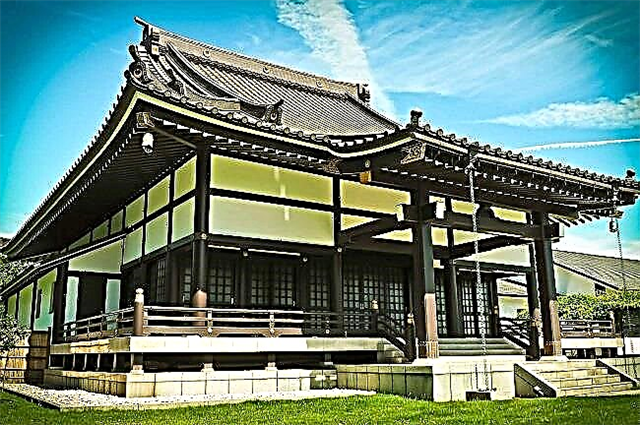
The basic architectural elements of the Japanese style are determined not by fashion trends, but by vital necessity. Both in antiquity, and now the main principle of architecture remains the unity of buildings and the surrounding nature. Functionality is a priority, while aesthetics fade into the background. Characteristic features of Japanese houses: a small amount of decor, practicality and rationalism.

Previously, in Japan they built houses made of wood and rice paper. Today, fiber cement boards and ceramic siding are used. Japanese-style features include a terrace with plank flooring. For greater authenticity, the terrace is decorated with container gardening.
American style
The style is an adaptive variation of architectural trends that previously existed in Europe. From the desire of the first settlers to demonstrate the scale and richness of the house, the need arose to create not modest dwellings, but an entire architectural complex.

The style is distinguished by a minimum of relief details, the predominance of straight lines, symmetry, light calm tones, many windows, horizontal extent, an asymmetric roof. Currently, this stylistic trend is a mixture of architectural styles. General concept: to build a spacious comfortable house where everyone will be comfortable. Usually this is a frame one-two-story house with a low foundation with a veranda or with a spacious porch.

Country style
The main features of the rustic style are naturalness and simplicity. The direction reflects the folk traditions of his country, differs in deliberate rudeness, proximity to nature.

The building in a rustic style looks authentic, natural materials (stone, wood) and natural shades are used in the exterior decoration. Usually a house in this style is built with a veranda or a massive porch. If the building has two floors, a spacious balcony is built over the porch, in harmony with the general style of the facade. Characteristic features of the Russian village style: log walls, windows with carved platbands.
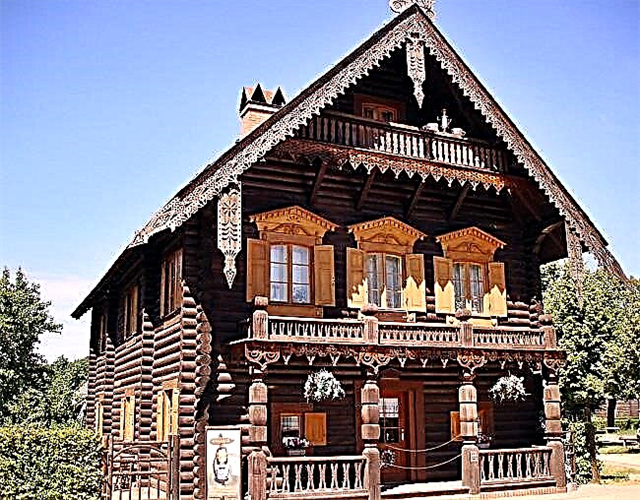
Wright's Style
Style originated in the United States in the late XIX and early XX centuries. The founder of the direction was the architect Frank Lloyd Wright. Wright's style is also known as style. Prairie.

Wright advocated for the cleanliness and simplicity of the lines, the building whose exterior is integrated into the surrounding landscape. Prairie-style homes blend seamlessly with the natural scenery for the Western movie. Key features of the style: long horizontal lines, minimalist decoration of the facades, tent or flat roofs, glazed galleries.

The style of the “alpine house” is chosen by those who dream of an atmosphere of security, harmony and tranquility.

The direction has spread from an ancient province in southeast France. Buildings in this style are adapted for the harsh climate and therefore are optimally suited for Russia. Today, the chalet has a relevant and sought-after style for functional suburban housing.
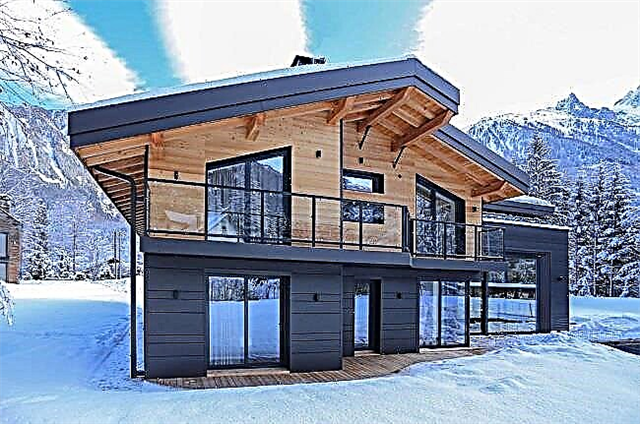
The cornerstones of the style: a solid stone foundation and wood up, the use of high-quality eco-friendly materials, a sloping roof with a large angle of inclination, a terrace. Another feature is the multi-level architecture, as the original chalets were mainly built in the mountains and repeated the uneven terrain. For this reason, the chalets fit perfectly into the plot with a significant bias. For the roof of the “shepherd’s house” a flexible, ceramic, wooden tile is used to maintain authenticity. The modern dwelling of alpine shepherds is built on 1-2.5 floors.

German style
This architectural direction is chosen by those who value solidity, simplicity and elegance. The nuances of designing the facades of buildings in the Bavarian or German style: strict lines, lack of redundancy of decorative elements, restrained colors, the use of inexpensive materials.

This style inherits German accuracy and the pursuit of order. Despite this, the houses resemble charming fairy-tale houses descended from the pages of fairy tales. The German-style building is designed as a square or rectangle with a gable roof.
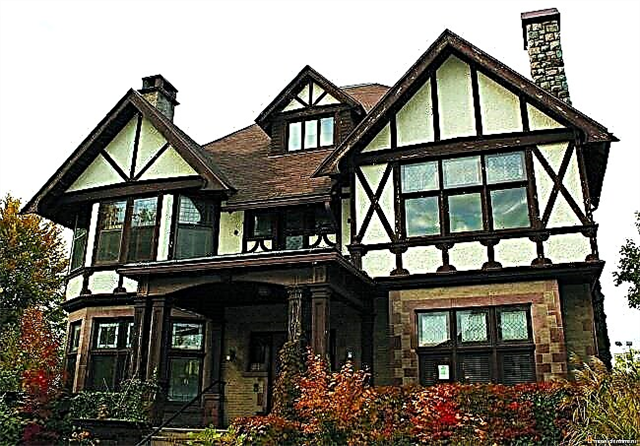
Walls are painted in white, sand, gray or other discreet colors. The tiled roof is traditionally made in brown or red. The shape of the windows is rectangular or arch-shaped, the glazing is divided into several square or rectangular sections, the windows are sometimes supplemented with shutters.
English style
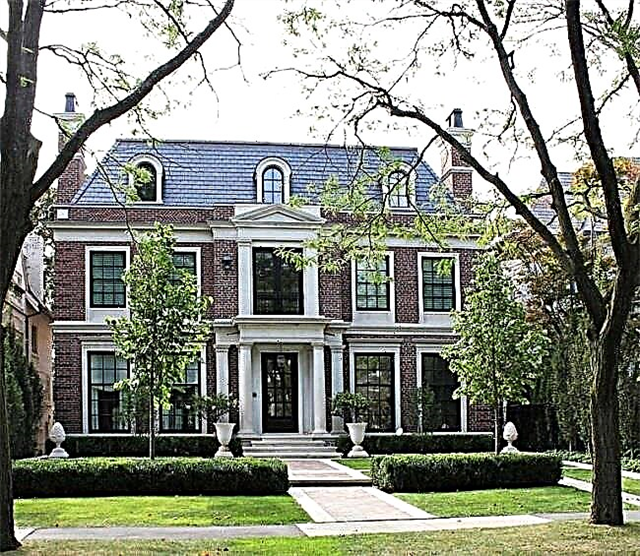
Style is a combination of sophisticated taste and restraint. The cornerstones of the architectural direction: symmetrical rectangular plan, red brick walls, low entrance with a portico.

Currently, the architecture of the English mansion is dominated by elements inherent in the architecture of a particular historical era. Key features of the eclectic style: a roof with a dormer window and a steep slope, low-lying windows, walls made of brick or stone.
Fachwerk
The style originated in the 15th century in Germany. The half-timbered house is an example of German quality and practicality. Buildings in this type of architecture suggest the presence of an external frame of vertical, horizontal and diagonal beams.

Feature of the style: overhanging the second floor over the first. The main material of half-timbered houses is wood. Since wooden houses are flammable materials and require antifungal treatment, they currently resort to fachwerk imitation using polyurethane panels that give the impression of wooden beams.
Gothick style

Gothic houses have their own characteristics: strict geometric shapes, resemblance to a defensive fortress with one to four tall towers, a pointed roof, elongated, lancet windows, stained glass, modest decoration of the facade, a contrasting combination of the color of the roof and walls. The building material of Gothic houses is stone or brick. Buildings have at least 3 floors. Gothic-style houses look authentic at the edge of a forest or in mountainous areas.
Provence

The style of the village houses of the southern French province originated in the 19th century. The architecture of Provence is consonant with those who can see beauty in everyday life. A characteristic feature of the Provence style decor is some negligence and aged materials for the exterior decoration of the facade.

Distinctive features of style - a high spacious terrace, forged and carved details, wooden shutters and windows, a tiled roof with several slopes, a balcony with columns and balusters, massive doors with metal hinges. Exterior wall decoration is done in light pastel colors. The advantage in the decoration of the facade is given to natural materials: wood and stone, with a small budget they are replaced with high-quality imitation.
Casa Batlló
An example of Art Nouveau architecture of the early XX century was built in 1877. In 1904-1906, the building was completely rebuilt by the brilliant architect Antonio Gaudi. Both the facade and interior interiors underwent reconstruction.

The building, due to the many design techniques used, stands out for its stylistic heterogeneity and is a real Barcelona attraction. The exterior of the house is distinguished by the decor of glass mosaic, the predominance of asymmetry, natural motifs, religious symbols, colorful pure colors, balconies with fencing in the form of the pelvic bones of the human skeleton. Gaudi radically rebuilt the seven-level construction, giving the facade a smooth shape, and the roof silhouette of the dragon's arched back.
Loft style in architecture
The homeland of a non-standard direction in the internal and external design of houses is the USA. Initially, these were factories, warehouses, factories converted into residential premises. Loft objects have an industrial, authentic look.

Conceptual features of the architectural style:
- Off-gray, red-brown colors and metallic shades.
- Strict lines and simplicity of geometric shapes with minimal decor.
- Fragments of industrial industrial structures in the form of metal stairs, factory pipes, ventilation systems.
- Unusual combinations of red aged brick and panoramic glazing, untreated or roughly plastered concrete and ferrous metal for a residential building.
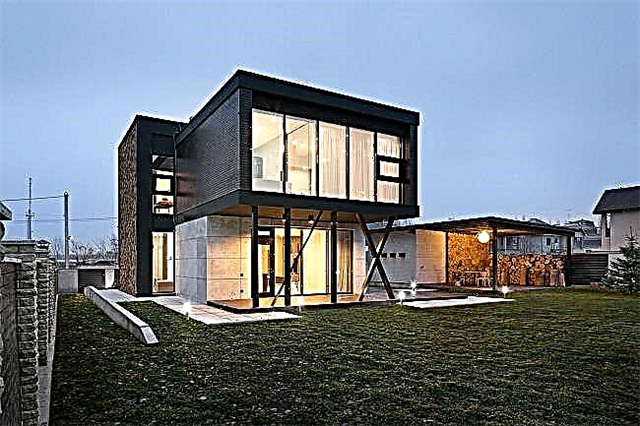
Loft-style houses prefer creative personalities with a non-standard approach to life. The architectural objects claiming to belong to the Loft are distinguished by extraordinary exteriors, referring to the industrial past.
Barnhouse

The architectural style, the ancestors of which were Loft, minimalism and bio-tech. These are the so-called house-sheds in one, two floors. Conceptual features of houses in this style:
- Strict simplicity of form and texture.
- The presence of open wooden terraces.
- Rectangular steady form.
- Gable or single-pitch roof.
- Wide front door.
- Laconic decoration of the facade with metal or boards.

Barnhouse emphasizes perception on merging with nature. This is an affordable and inexpensive architectural project with minimalism in the decoration of the exterior and exterior. The concept of the stylistic direction reflects the desire for simplicity and respect for nature. Democratic style allows the use of various building materials, depending on the area. Mostly this is wood, but it can also be raw brick, limestone, steel profile.
When choosing the architectural style of the future home, they are guided not only by practicality, but also by beauty, then the building will have an individuality. The decision to build a house in the chosen style allows you to choose an architectural solution that meets personal tastes and needs. It is desirable that the style of exterior decoration continues in the interior design.
Supplement our article - video on the topic:
Number 8. Italian style
The Italian-style house will look good both in coastal regions and in areas with dense vegetation. There are no requirements for the size of the building - the main thing is to convey the atmosphere of comfort, peace and relaxation.
Main features:
- flat or almost flat roof, the presence of a terrace with a canopy, shutters on the windows,
- the facade is finished with brick or plaster in light shades, the roof is made of natural terracotta tiles or other materials that look like it (flexible tiles and metal tiles),
- decorative elements have functional significance. For example, brackets that support the roof. The balcony and terraces use landscaping, nice furniture and lamps.
No. 9. Russian style
Beautiful log houses with an abundance of decorative carved elements, as once used to by wealthy merchants, emphasize the status of the owner and his pride with his roots and origin. A house in the traditional Russian style is an expensive pleasure, but, on the other hand, such a house gives a feeling of complete security and comfort.
Specific traits:
- a wooden blockhouse is used to build a house, but today it is often replaced with a block house to reduce the cost of construction - it looks the same from the outside, and is much simpler to install. The basement can be made of stone or brick, but here you can be guided by regional features, because in different parts of the country their traditions in home improvement have formed
- structural elements of the house also play a decorative role, because they are performed with embossed or through thread. It is present on shutters, platbands, overhangs of the roof, fences,
- each house in the Russian style is unique, two identical ones do not exist.
No. 12. European style
Domestic architects sometimes operate with such a concept as the European style. It has incorporated the basic features of the features of house building in a number of European countries, but does not have any specific features that make it possible to determine a clear belonging to a certain region. It turns out a conservative strict style, not without decor.
Main features:
- regular geometric shapes, the predominance of rectangular and square shapes, but there is a place for unusual decor (stone inserts, beautiful lamps, sophisticated bay windows),
- two or four-pitched roof made of natural or metal tiles,
- small or medium sized square or arched windows,
- the facade is made of plaster, the basement and windows can be decorated with stone.
No. 14. Prairie Style, or Wright Style
The style is named after the American architect F.L. Wright, who is called one of the most controversial.He has a lot of discoveries and bold decisions, he believed that the house should not have complex details, because they will distract from nature, and the building should complement the environment. The simplicity of the lines, which was characteristic of the houses that he built, became a feature of the new style. Thanks the prevalence of horizontal lines and surfaces, the direction was given the second name - prairie style.
Main features:
- flat and tent roofs with wide overhangs, united by a common horizontal window element,
- the house dissolves as much as possible in the landscape, the boundaries between the room and the street are erased, which is achieved not only by the predominance of horizontal surfaces, but also due to massive glazing,
- the facade is made of brick, wood, stone, it is possible to use wooden elements. The decor is minimal.
Number 15. Castle style (medieval style)
Looking ahead, we note that this style is far from the most popular today. Someone calls him too pretentious, someone - unreasonably expensive. It is suitable mainly for large houses. As a compromise, you can use only certain elements of the style. Architects, by the way, gave the direction another name - disney style.
Main features:
- massiveness and high walls. The sense of monumentality is achieved due to the intricate asymmetric composition of the facade, large forms and the absence of architectural excesses. The presence of balconies, terraces, turrets is welcome,
- the complex shape of the roof, because often the house is large and consists of several parts,
- the facade is faced with stone, brick, less often - with plaster. To reduce the cost of construction, use artificial materials that well mimic natural,
- windows are arched or rectangular, doors can be forged or stained glass.
Number 17. Renaissance
Renaissance-style architecture is moderation in everything: the simplicity and conciseness of the lines, along with thoughtful, unusual decor, allows you to create cozy, solid houses.
Main features:
- clarity of forms, symmetry in the arrangement of windows, the presence of numerous add-ons and columns supporting the roof or balcony of the second floor. Rectangular and semicircular shapes are preferred.
- the presence of a patio,
- finishing is done in bright colors from stucco and stone.
Number 18. East style
Oriental fashion has touched not only the kitchen - quite often cottage villages decorate houses today, when you look at it, anyone will definitely guess - this is the eastern style. Him main features:
- roof with bent up slopes. In the east, they believe that this form of roof helps protect the house from evil spirits,
- the use of natural materials, including wood and stone,
- the presence of a large terrace along the contour of the house,
- well-maintained house territory.
No. 19. Art deco
Art Deco combines elements of Art Nouveau, Empire style, as well as Egyptian and African motifs. The result is a peculiar, slightly artsy and recognizable style.
Main features:
- a combination of straight strict lines with broken and rounded, the use of geometric shapes in the design of the facade,
- the presence of ethnic patterns, arches, spiers,
- pastel natural shades,
- natural materials, including wood, stone, brick, ceramics, metal, glass.
No. 20. Post-soviet style
For starters - a style that can combine most of the buildings in the domestic space:
- the facade is as simple as possible,
- metal roof,
- the use of the most affordable or even improvised materials during construction,
- small windows.
Designing a house taking into account the chosen architectural style is better to entrust to a professional, as an alternative - finished projects, which will cost somewhat cheaper than developing an individual solution. Do not forget to take into account not only your own preferences, but also the features of the surrounding space, because the house should organically fit into the environment.
Stucco for the facade of the house
This coating has significant artistic potential - with its help you can set a huge number of textures and shades in a variety of combinations. Plaster allows you to implement any coloristic solution. At the same time, working with it is relatively easy - you can plaster the facade without the help of specialists. And the cost of this material is quite affordable.

Plaster has a serious drawback - it is unstable to environmental influences. Humidity, sudden changes in temperature can cause cracks and delamination. Facade cover will have to be updated frequently.


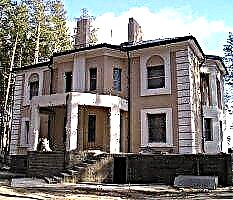






But this material fits well in almost any style, ranging from traditional classical to innovative cutting-edge experiments.

Siding: advantages and disadvantages
Another common option for facade decoration is the so-called siding, which is a vinyl or metal panel. Among the advantages of this solution, I also want to name a wide range of colors, attractive price and ease of installation, which can be done on their own.
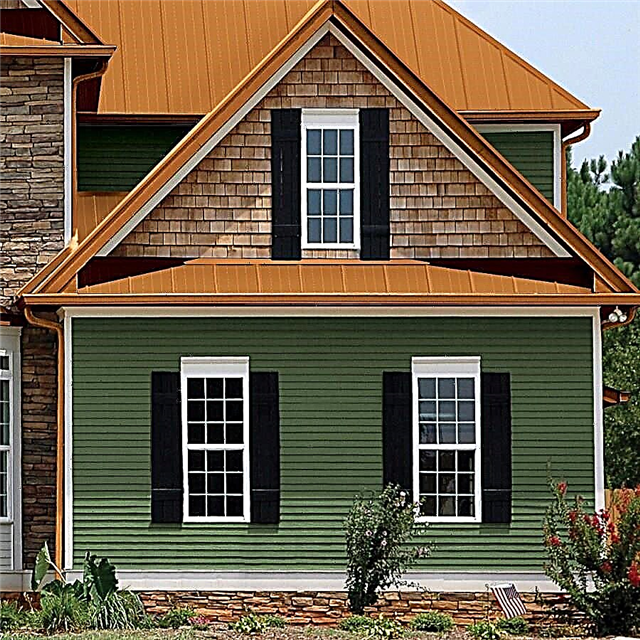
Another significant advantage of such panels is their practicality - they are resistant to temperature loads and very durable. With a competent approach, the use of siding can also benefit the visual image of the cottage.
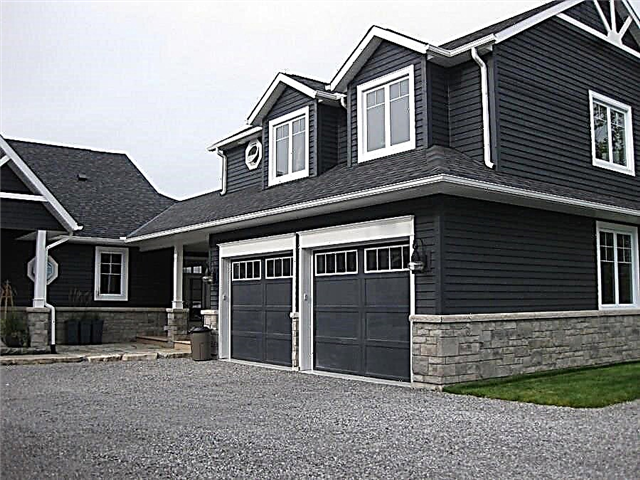
However, this material does not fit well with classic styles. If you want to make your home truly luxurious, reminiscent of the palaces of the past, then the siding will have to prefer some other options. But modern architectural trends very effectively interact with it.
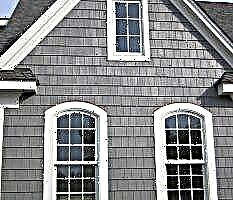

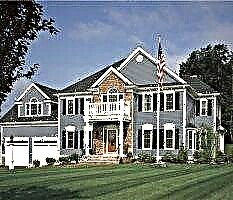



Wooden facades of houses
At the moment, this option is very relevant. It can be represented by panels of wood, imitation of timber and so on. The set of possible color solutions, of course, in this case is very limited.



However, it should be noted that the appearance of a wooden surface is psychologically perceived by a person as pleasant and warm. In addition, it is a natural material whose safety for people and the environment is guaranteed.
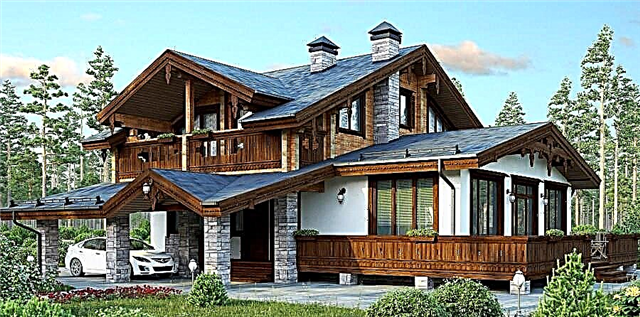
Among its disadvantages, I would like to mention the difficulty of leaving, low resistance to possible damage, and a relatively high price. However, despite all this tree continues to be actively used - numerous examples of its application can be easily found in any catalog of the best facades of masterpieces of modern world architecture. The fact is that this material fits well and effectively into almost any style, giving the object completeness.

Artificial cladding stone
An expressive way of exterior decoration of the building is decorative stone. His artistic abilities are very great - a variety of forms, drawings, textures and shades can become a powerful graphic tool in skillful hands. Read here: The blind area around the house.

True, the surface lined with artificial stone may be too active, drawing attention to itself - for this reason, this material is often used in combination with some other.

Among the undoubted advantages of a decorative stone, it is necessary to name its strength, durability, resistance to various influences. And the obvious disadvantage is the relatively high cost.



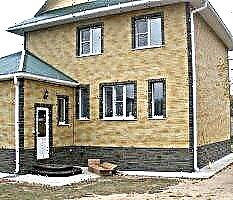




Stone is an integral part of classic styles. This is a traditional material that has often been used in the past, in particular for facing socles. However, he found his niche in modern construction and is part of many fashionable solutions.
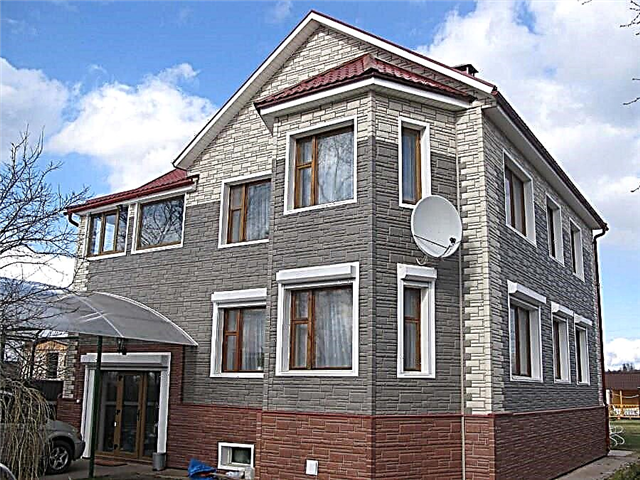
Decorative details
Do not forget about the little things added solely to match a particular style. Platbands on the windows, decorative beams, openwork cornices - all these things determine the unique character of the house.

This is especially true of traditional, classical architectural trends. Contemporaries tend to neglect such artistic means.

However, the use of a variety of architectural details is still relevant. To make sure of this, just look at the photos of the facades of private houses in any architectural magazine. Pilasters, capitals, cartouches are still found in the design of so many buildings.
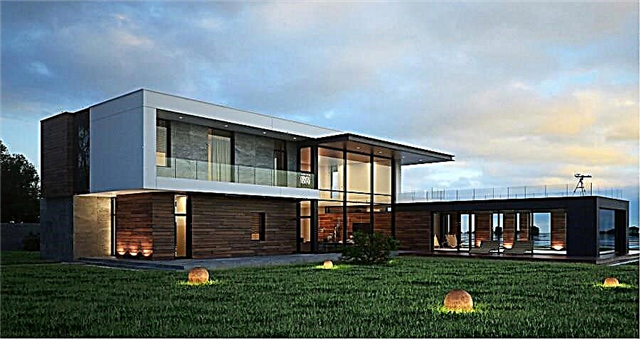
At the moment, they are made of lightweight modern materials that are as simple as possible to process. There are entire catalogs where the items you need can be selected and ordered.








